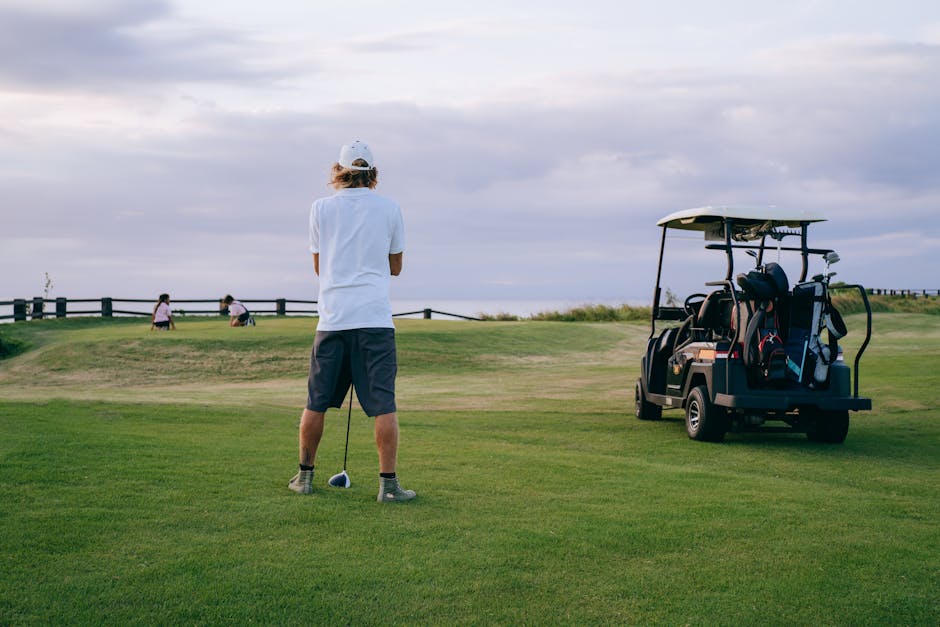Mastering Your Golf Grip: Essential Techniques for Beginners
Introduction
Golf is a sport that combines skill, strategy, and precision. As a beginner, mastering the fundamentals of the game is crucial, with the grip being the foundation of all golf skills. A proper golf grip enhances your control and accuracy, empowering you to make more consistent shots. This article explores essential golf grip techniques for beginners, providing step-by-step guidance to help you improve your game.
Understanding the Importance of a Good Golf Grip
What is a Golf Grip?
The golf grip is the way a golfer holds the club. It’s the only point of contact between the player and the club, making it a critical element of the swing. An effective grip can drastically improve the trajectory and distance of your shots, making it an essential skill for any golfer.
Why is it so Important?
A good grip aligns the clubface with your intended path, ensuring that the power from your swing translates efficiently into the ball. A poor grip can lead to issues like slicing, hooking, and other inconsistencies in your game.
Types of Golf Grips
The Interlocking Grip
This grip involves interlocking the pinkie finger of the trailing hand with the index finger of the leading hand. It’s favored by players with smaller hands or those seeking a more secure connection between their hands and the club.
The Overlapping Grip
Also known as the Vardon grip, this style involves overlapping the pinkie finger of the trailing hand over the index finger of the leading hand. It’s one of the most popular grips and is used by many professional golfers due to its balance of control and flexibility.
The Baseball Grip
This grip is where the fingers do not overlap or interlock. Each hand is placed adjacent to the other, similar to holding a baseball bat. It’s sometimes recommended for beginners with larger hands or those who struggle with joint pain.
Step-by-Step Guide to a Proper Golf Grip
Selecting Your Grip Style
First, decide which of the three main types of grips feels the most comfortable and natural in your hands. Experiment with each to see which provides better control and comfort.
Hand Placement
- Lead Hand: Position your lead hand (the left hand for right-handed golfers) at the top of the club handle. Ensure the pad atop the handle sits snugly in the palm of your hand.
- Trailing Hand: Place your trailing hand below the lead hand, employing your chosen grip style.
Grip Pressure
Your grip should be firm yet relaxed. Over-gripping can tense your muscles and impact your swing’s fluidity and effectiveness.
Aligning the Clubface
Ensure the clubface is square to your target line. This alignment is crucial for hitting the ball straight and accurately.
Common Mistakes to Avoid
Over-Gripping
Holding the club too tightly can lead to less effective shots. Your hands should hold the club firmly but not so tight that your knuckles turn white.
Incorrect Hand Position
If your hands are positioned too far left or right, it can alter the angle of the clubface at impact, leading to slices or hooks.
Ignoring Grip Pressure
Varying grip pressure during a swing can lead to loss of control. Consistency in grip pressure is key to maintaining an effective swing rhythm.
FAQs About Golf Grips
Can my grip style change as I improve?
Yes, as you become more comfortable with the game and your own playing style, you might find that a different grip suits you better.
How often should I check my grip?
It’s a good idea to review your grip before each session, as subtle shifts in hand position can develop without notice.
Do weather conditions affect how I should grip the golf club?
Yes, in wet conditions, you might want to grip the club slightly more firmly to prevent it from slipping. Consider wearing gloves to improve grip under these conditions.
Conclusion
Mastering your golf grip is a fundamental skill that can significantly enhance your overall performance. By understanding the various types of grips and adhering to best practices in grip technique, beginners can set a strong foundation for a rewarding and successful golfing experience. Remember, practice makes perfect, so spend adequate time refining your grip to see noticeable improvements in your game.
